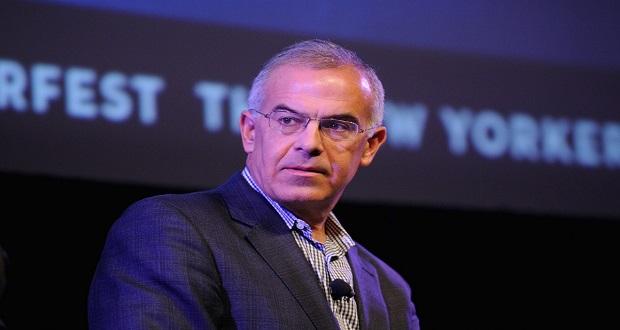
A decade-long career in nonprofits led me to a vocation in DEI, storytelling, and communications. I grew up understanding what it meant to “live in purpose.” I spent my formative years on the tiny Island of Guam, where my parents served as missionaries. As you can imagine, we lived humbly in community with the locals and strived to help meet their needs – everything from housing to food to spirituality.
That led me to begin my undergraduate experience as a pre-med student, thinking that was how I would perpetuate good in the world. One seemingly insignificant lecture, however, led to a trajectory change that would shape the rest of my career. In one of my general ed classes, the professor spoke briefly about nonprofits. I thought everyone within these organizations was a saintly person who volunteered their time and didn’t get paid. My professor, whose mother was the CEO of a large nonprofit, helped me understand otherwise. I tracked down the professor to ask some follow-up questions, and she even offered to set up several informational interviews with leaders of nonprofits that she knew. That experience translated into a 10+ year career in the nonprofit sector as a fundraiser, volunteer manager, and communicator.
Over the course of my nonprofit career, I wore many hats. I was part of an organization that conducted an annual count of people that were unhoused and served others in the community who found themselves in a scenario of intense need. I worked with youth transitioning out of foster care, many spending their 18th birthday with nothing more than a trash bag of personal items and a “good luck” from a government system that consistently left them unprepared for the world ahead. My afternoons were often spent at various apartment buildings, ensuring that school aged kids had a meal at the end of the day and a safe place to wait for the sun to set.
While we did award-winning and transformative work within communities, it broke my heart to see the inequity we perpetuated within the walls of organizations entrusted with supporting the most vulnerable. Click To TweetThose experiences underlined the intense need for equity, access, participation, and simply treating others with dignity. Those same experiences also highlighted the lack of application within many nonprofit organizations when it came to advancing equity and upholding their publicly-espoused values – for not only their own employees, but for other internal stakeholders like volunteers and board members. While we did award-winning and transformative work within communities, it broke my heart to see the inequity we perpetuated within the walls of organizations entrusted with supporting the most vulnerable. Study upon study affirms the inequity I experienced and witnessed in nonprofit organizations that exist largely to mitigate inequities created by systemic flaws. Most often these things are experienced by historically underrepresented and excluded groups that make up an emerging majority at [1] 40%+ of the current U.S. population. These realities of nonprofit diversity and equity gaps are concerning:
- [2] In 2019, 87% of nonprofit CEOs in the U.S. were white and 78% of nonprofit board members were white.
- [3] Nonprofit employees are often overworked and underpaid.
- [4] Misconceptions on “overhead spending” abound and shortchange needs for infrastructure that allows nonprofit employees to perform and serve community well.
- [5] Nonprofit executives of color were less likely than white EDs/CEOs to receive support from peers and affinity groups over their careers; and white nonprofit leaders are not mentoring people of color in large numbers.
- [6] Race to Lead found 49% of respondents of color indicated that their race had negatively impacted their advancement.
- [7] Nonprofit leaders of color are more likely to receive inadequate compensation.
- [8] While both white people and people of color are called upon to take on special projects, people of color are less likely to receive raises, promotions, and bonuses compared to their white counterparts.
Witnessing and experiencing these gaps sprung me into action. I am a hand-raiser – I never need to be “volun-told.” I willingly jump in. I raised my hand to lead employee resource groups. I stood up diversity/equity/inclusion committees. I stood in as human resources. I managed staff not officially assigned to me. I sponsored people into promotions and oftentimes those promotions were to organizations outside of my own.
Principles I learned on the front lines in community and working with those in crisis are what led me to practice DEI within healthcare and public health institutions that often serve as an entry point for the multitude of social services communities rely on. If I can have impact on the ways of working and the lived experiences of healthcare providers, employees, CEOs, and suppliers in corporate or institutional spaces, then I can help impact the end user, the patients, and the real people in community.
I felt compelled to codify the principles by which I still operate today. Each principle works in concert with one another to varying degrees depending on the scenario and needs. Here are the six principles that I hold dear each day, as informed by my former life in philanthropy and nonprofits:
Language is Transformative and Holds Power
Language, shared or otherwise, has the potential power to transform the spaces in which we operate and the people we encounter. This includes the decisions we make in framing information or ideas with our words and the frame effects that carry impact on both person and environment.
Language has the potential power to transform the spaces in which we operate and the people that we encounter. This includes how we frame information and what the impact on both person and environment is. Click To TweetSystems Must be Transformed
In many cases, existing institutional systems have historically and inherently been built inequitably, whether or not this was the intention. Systems change is an intentional shifting in the conditions that hold a problem in place and most often begins with those most explicit. The conditions that must be shifted exist at varying degrees of visibility to those in the system and must be named to be transformed.
In many cases, existing institutional systems have historically and inherently been built inequitably. Systems change is an intentional shifting in the conditions that hold a problem in place. Click To TweetLook to the Margins and Center their Perspectives
Empowering perspectives of those historically marginalized and excluded is critical to this work. Center the voices and experiences of those that face systemic oppression and discrimination as they can provide the greatest insight into what it means to be marginalized and the shape that justice and repair might take.
Empowering perspectives of those historically marginalized and excluded is critical to this work. Center the voices and experiences of those that face systemic oppression and discrimination. Click To TweetCollective Impact and Solidarity
Change happens most sustainably when our agency is collective, practiced in solidarity, and rooted in trust. No one needs to be saved, but rather resourced with the supports and environments that make space for the value we each hold and bring.
Change happens most sustainably when our agency is collective, practiced in solidarity, and rooted in trust. No one needs to be saved, but rather resourced with the support that makes space for the value we bring. Click To TweetCritical Reflection
Reflection is a vital practice and contextual analysis matters. We examine historical context, societal/cultural context, physical context, rhetorical context, etc. Scenarios and actions are best understood when examined in relation to one another. Ask more questions, and listen more than not.
Scenarios and actions are best understood when examined in relation to one another. Ask more questions, and listen more than not. Click To TweetCultural Humility > Cultural Competence
A more empowering framework is one which seeks to celebrate humans and understands that learning about others is an ongoing and lifelong effort. Setting a goal of mastering the totality of knowledge about people who differ from each other is unrealistic, it is more enduring to adopt a posture that is iterative and responsive to the cultural needs of those around us.
Setting a goal of mastering the totality of knowledge about people who differ from each other is unrealistic, it is more enduring to adopt a posture that is iterative and responsive to the cultural needs of those around us. Click To TweetEquity principles are interconnected, intersectional, and anything but linear. They offer a compass for the ways in which we approach doing the work, building relationships, and honoring the people we are privileged to walk alongside. You might think of them as norms, tone/tenor, an accountability partner of sorts. The presence and practice of these principles in the work lend themselves to recognizing and honoring both personal and collective agency. This work must be principled and rooted in the end goal of justice which holds to four pillars: access, equity, participation, human rights.
I came to these personal principles by way of several teachers and by asking myself a series of questions that I hope will aid you in considering your own personal principles that both inform the work and your life.
[1] https://www.census.gov/quickfacts/fact/table/US/PST045221
[2] https://theconversation.com/racial-and-ethnic-diversity-is-lacking-among-nonprofit-leaders-but-there-are-ways-to-change-that-174490
[3] https://www.theatlantic.com/business/archive/2016/08/the-plight-of-the-overworked-nonprofit-employee/497081/
[4] https://nonprofitquarterly.org/why-funding-overhead-is-not-the-real-issue-the-case-to-cover-full-costs/
[5] https://racetolead.org/race-to-lead-revisited/
[6] https://racetolead.org/race-to-lead-revisited/


















